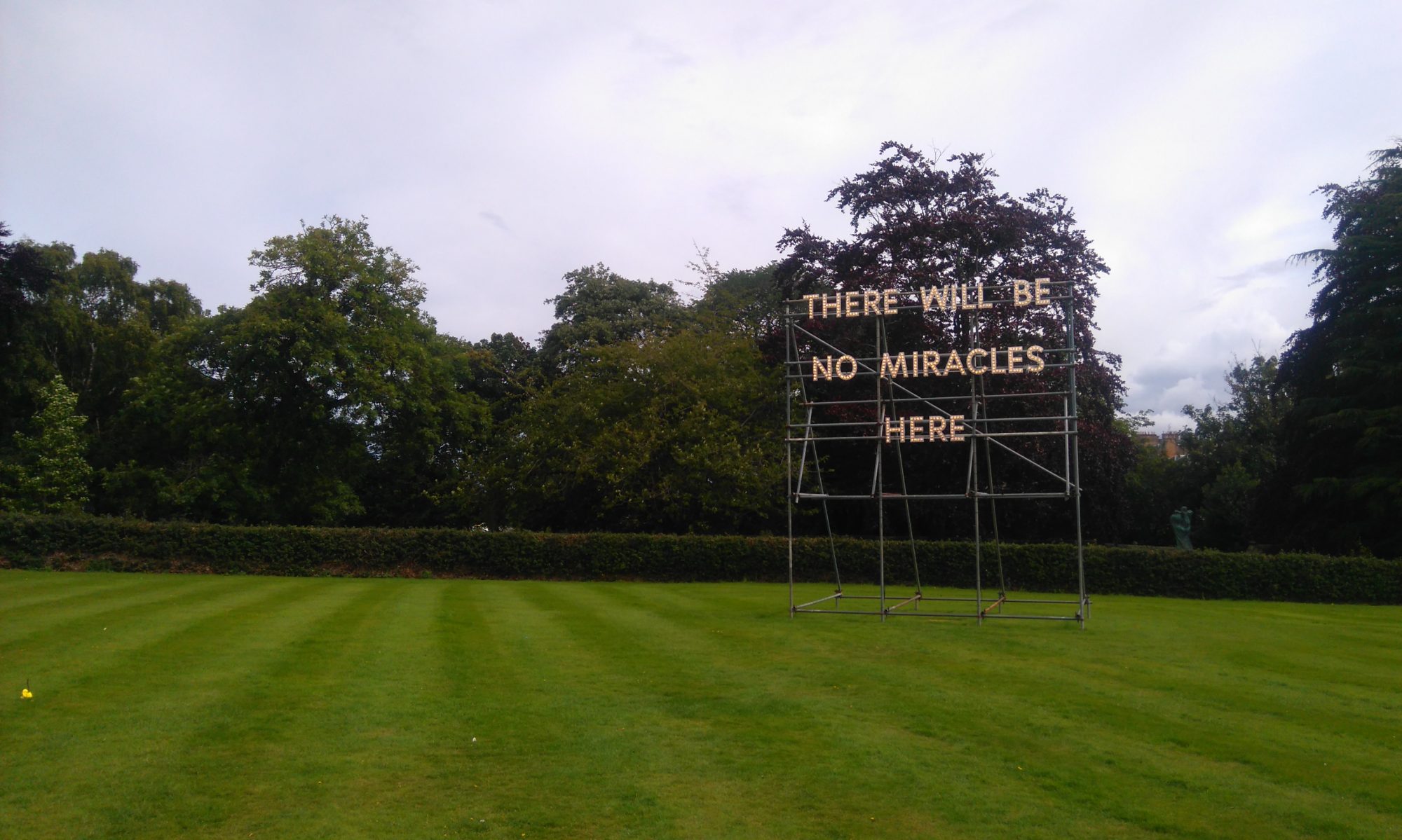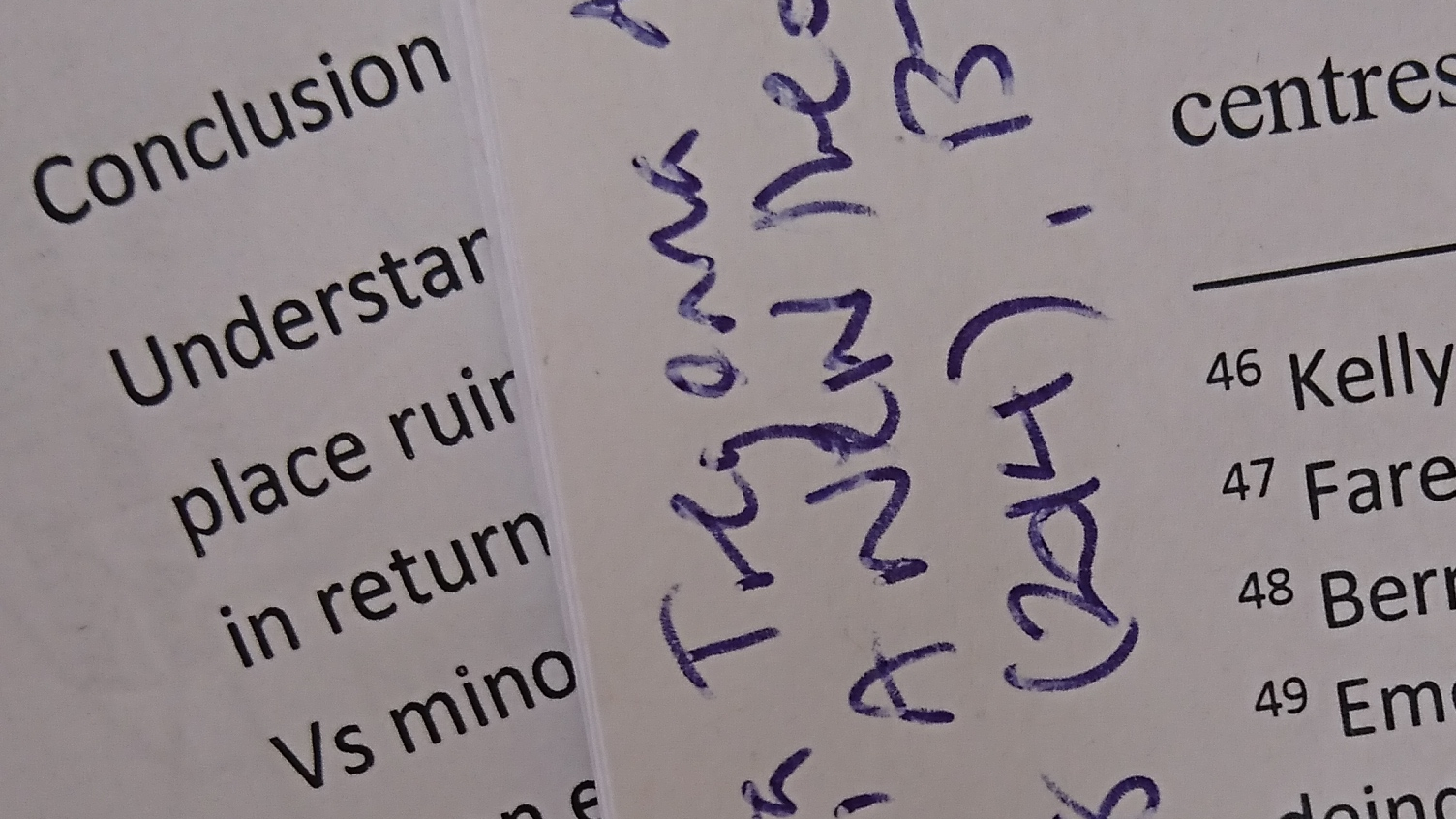Here’s 12 things you might want to think about or check back on when writing your essays. These are written with English Literature undergraduates in mind, but some of the general comments will apply to other essay writing, too.
1. Structure: Introductions, argument, and conclusions
The introduction really sets the tone for the piece, and I’d suggest writing a rough draft of it first to give you an idea where you’re going, but revising it last, when you know what you’ve written. If you’re researching actively as you go and revising your viewpoint when you learn more, it’s pretty much inevitable that you won’t write exactly what you set out to do.
‘Your first sentence settles all; your first sentence determines the subsequent direction and quality of the rest.’
Haslam Mills, a noted editor of the Manchester Guardian, quoted by Neville Cardus in My Autobiography, (London: Collins, 1947), p. 105.
Make sure your essay has a coherent, linear argument, rather than a collection of points on a theme. State your argument clearly in your introduction, and be positive: say “I argue that…” or similar, rather than “I aim to demonstrate…”.
If you’re not sure you’ve got the structure right, take a piece of paper and write down what each paragraph is about. Can you do each in a sentence, or a short phrase? No? If not, then you probably need to think about your structure. That phase of editing can enable you to see material which belongs elsewhere, and to see whether there’s a better order than the one you’ve defaulted to.
Conclusions are tricky. Ideally, you need to synthesise what you’ve said (not only reiterate your points). Try to gesture to the bigger picture without bringing in new material.
2. Using quotations
-
- Lead into quotations properly: you shouldn’t make a statement, place a quotation after it, and expect the reader to be able to understand your thought process of moving from one to the other. You should lead into your quotations with something along the lines of ‘Eagleton argues that:’ or ‘While in the novel x appears to y, Hulme argues that:’ Make the segue fluid, so it would read as a proper sentence if you removed the quotation marks.
- Always comment on quotations you use. Say how the quotation makes its point, and why that is important in the context you’re using it. Do you definitely need all of the quotation, or is some of it simply filling space?
- Paragraphs shouldn’t conclude at the end of a quotation. Use your own words to relate the quotation back to your overall argument.
3. Author =/= narrator
The author doesn’t usually equal the narrator. Unless you can prove similarities between author and narrator from biographical material – and even then you should be careful when making any such claim – then you should talk about what the narrator (or main character) does, rather than the author for the most part. If you’re going to use (auto)biographical material, remember to treat it equally critically, as text rather than as ‘fact’.
‘Never trust what writers say about their own writings.’
Walter Benjamin, The Arcades Project, trans. by Howard Eiland and Kevin McLaughlin (London: The Belknap Press of the Harvard University Press, 1999), p. 875.
4. ‘The reader’
If you say in analysing literature that something has x effect on ‘the reader’, it immediately prompts the question for the marker, ‘what reader’? There is no common reader of a novel; everyone reads from their own particular situation of chosen political viewpoint, accumulated knowledge and learning. A subjective viewpoint is implicit in the essay form, so be definite about your ideas as long as you can provide adequate supporting evidence.
5. Use active voice.
It’s much better, and much more economical in terms of word count, to say, for example, ‘Ulysses shows that…’ rather than ‘It can be said that Ulysses shows that…’. If in doubt, you can use the ‘by zombies’ test.
6. Be positive.
Avoid verbal ‘hedges’ and markers of uncertainty. Simply, try not to use words like perhaps, maybe, arguably – unless it is a really very contentious point that you’re making. In academic writing you are trying to persuade the audience that your viewpoint is the correct reading.
7. Avoid sweeping generalisations
Sure, ‘The nineteenth century was an age of great change’. However, what in particular is the change that’s relevant to your essay? Be as precise as you can, and support this from scholarship in history (or literary history).
‘In general, generalization is to lie, to tell lies.’
B. S. Johnson, The Unfortunates (1969; London: Picador, 1999), ‘Last’, p. 6.
8. Use precise vocabulary
Beware of over-emphasis. Avoid the use of words like ‘constantly’, ‘always’, unless it’s literally true; don’t say things like ‘It is often argued…’ or ‘Many critics have said…’ unless you’re going to follow this statement with a footnote which adequately demonstrates your point (many critics have argued, with a footnote to just one, is not a good idea).
9. Avoid rhetorical questions
Unless you’re going to answer them. And even then you might as well just formulate it as a statement for reasons of word count.
10. Reference accurately
Reference scrupulously and consistently at all times using an acknowledged academic style guide. The Edinburgh Napier requirement is MHRA style (http://www.mhra.org.uk).
11. All pieces must include a bibliography
This will usually be a list of works cited beginning on a new page (ctrl+enter in MS Word) at the end of the essay).
12. Proof-read your work
Look for typos which are also words – form for from, id for is, and classic homophones such as ‘bear hands’, ‘prophet margins’, and ‘pubic sphere’. Make sure you’ve spelt authors’ names correctly. Have you introduced and/or defined people, concepts, texts at the first mention? Is the written style and line of argument easy to follow?


